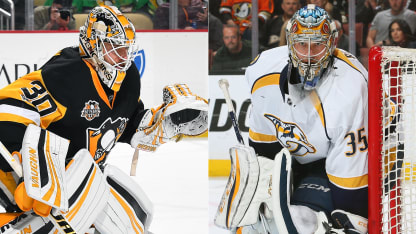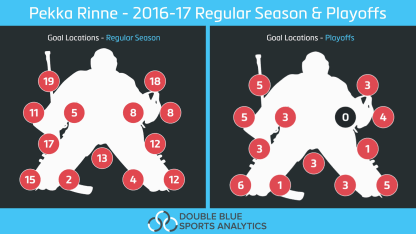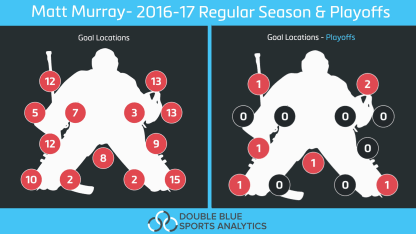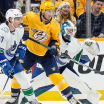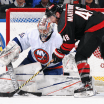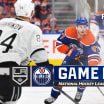Glove side:Most goalies have a side they move better to, and for Murray it was evident last playoffs that was his blocker, with a lack of rotation causing him to get a little flat and stretched out more often moving to his glove side. Looking at this regular season, there wasn't much of a discrepancy, with 38 goals above the pad on his glove side and 36 on the blocker. Murray, who used to drop his left side early at times, uses a fingers-up glove position to try to take away what shooters see high-glove but got caught dropping that glove a bit early on a shot over his glove in Game 6 against the Ottawa Senators. The 15 goals along the ice to his left, compared to 10 on his right, during the regular season include a tendency to end up fully extended and falling forward on the ice more often to his glove, especially early.
Glove for rebounds, under blocker to score:Though the glove side wasn't a problem during Murray's first full season in the NHL, some of the 30 rebound goals came off plays when he got a piece of the puck but wasn't able to control a shot high to the glove side. On the other side, Murray's blocker position, with his right elbow sticking out to keep the stick blade on the ice even in blocking situations, led to more goals under the arm and between the blocker and pad. Other than that trend, Murray is typically a goalie who forces opponents to beat him with good shots, with a conservative positional approach on end-zone play that rarely takes him out of a play. One playoff goal has come on a clean shot; the rest involved multiple elements.
Lateral off rush:Scoring chances that force side-to-side movement are more dangerous for all goalies, but Murray (6-foot-4) plays with a little more backward flow, taking early ice against the rush and timing his retreat. He also can get wide of his posts on plays down the wing, overplaying the short side and leaving extra distance to cover on wraparounds or passes that get through to the other side. Of the 53 regular-season goals Murray allowed on rush chances, 34 involved a lateral play and 22 crossed the slot line, an imaginary line that splits the zone below the tops of the faceoff circles. Of the 46 goals involving a one-timer, 21 were after a play across the slot line and 14 had a lateral element on the same side of the ice. Four of seven playoff goals crossed the slot line and a fifth had a same-side lateral element.
